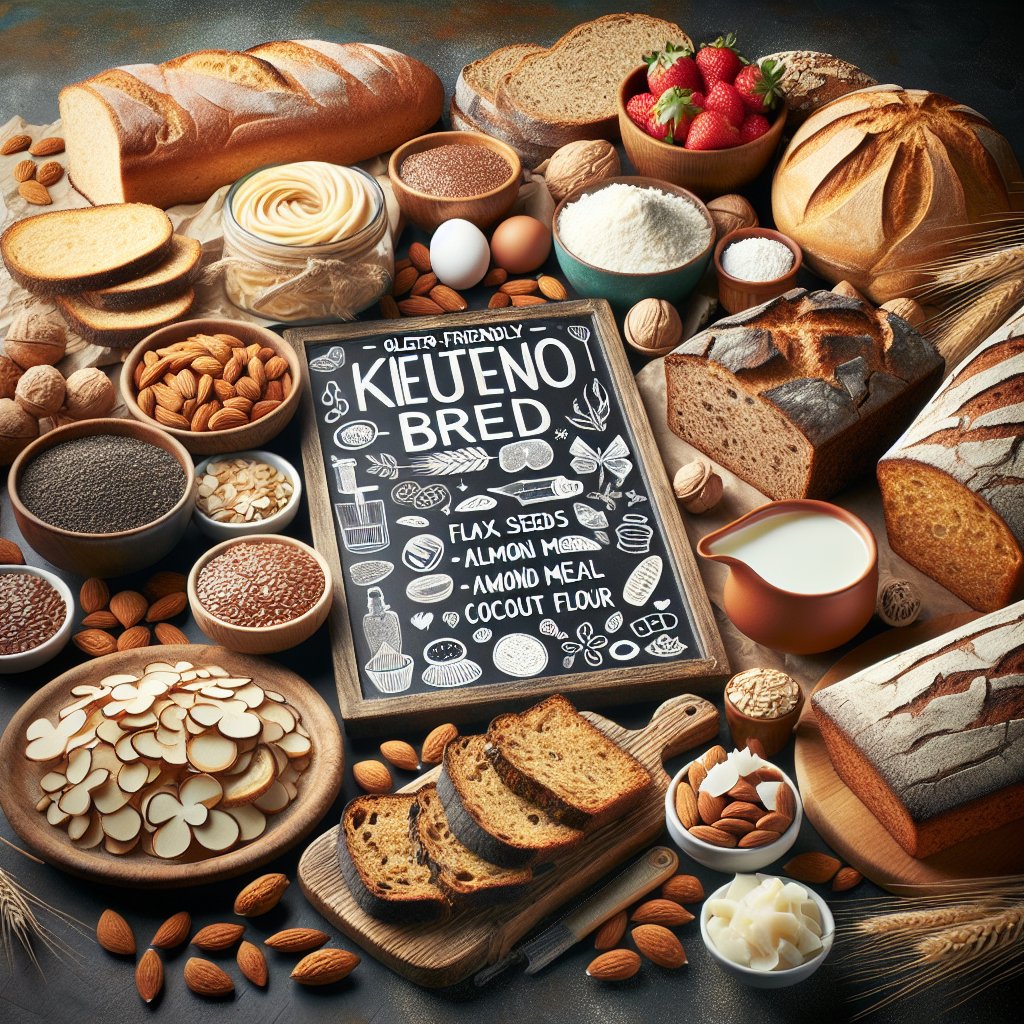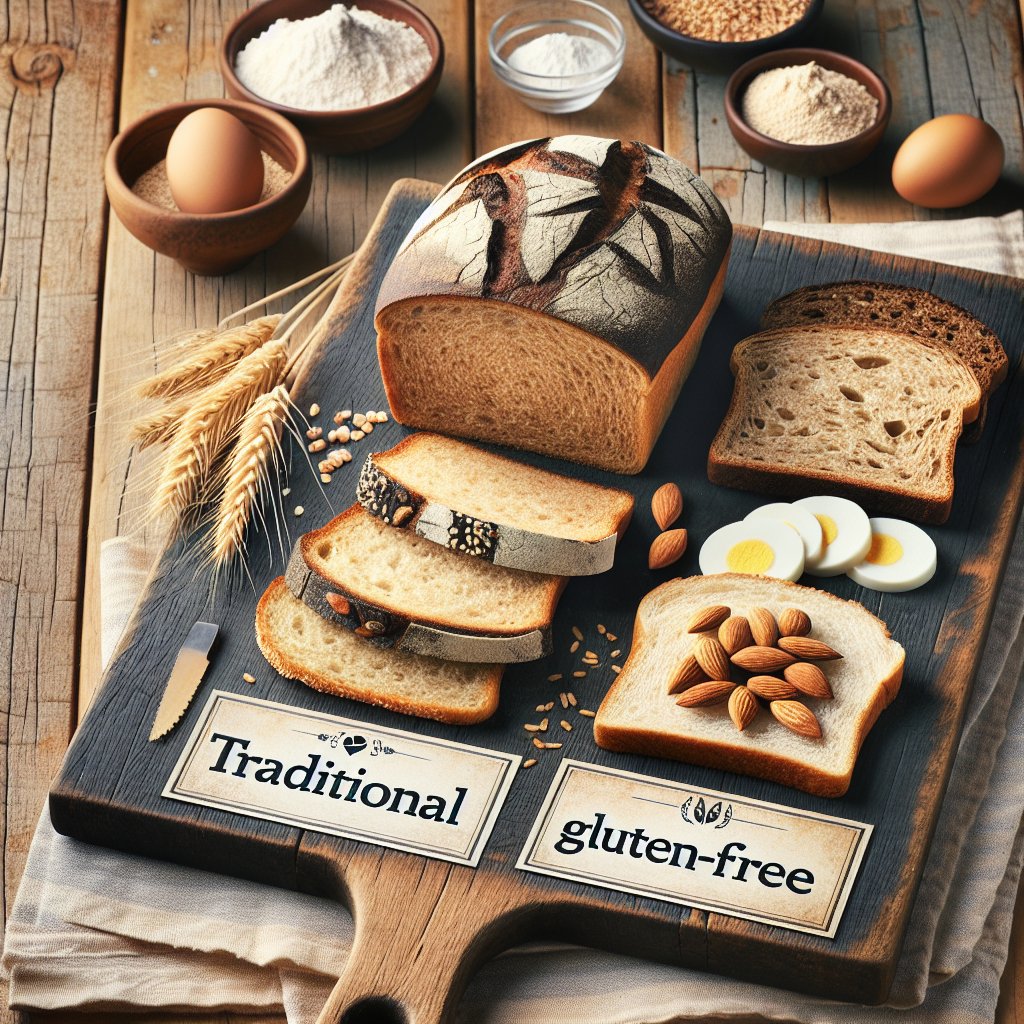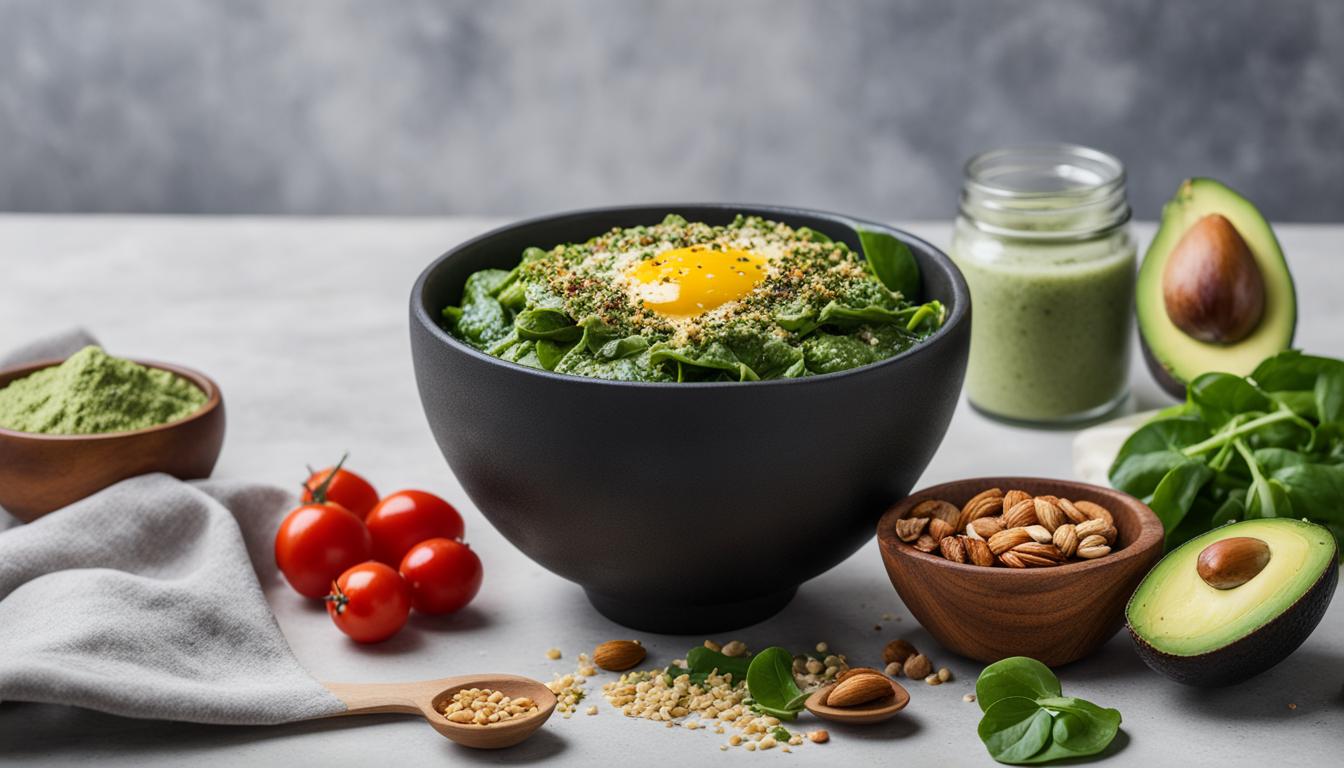Is Gluten-Free Bread Keto Friendly? Exploring the Surging Demand for Low-Carb Options
Exploring the Popularity of the Ketogenic Diet
Hey there, keto enthusiasts! Today, we’re diving into the exciting world of the ketogenic diet and the soaring demand for gluten-free options like bread. If you’re someone who has been on the lookout for low-carb alternatives, then you’re in the right place. Let’s uncover the reasons behind the skyrocketing popularity of the keto lifestyle and the increasing clamor for gluten-free products.
So, what exactly is the ketogenic diet? Well, in simple terms, it’s a high-fat, moderate-protein, and low-carb eating plan. The aim is to reach a state called ketosis, where your body burns fat for energy instead of carbohydrates. Research has shown that the keto diet can assist in weight loss, improve blood sugar control, and enhance overall health.
One of the primary reasons for the massive appeal of the keto diet is its effectiveness in promoting weight loss. Studies have indicated that following a ketogenic diet can lead to greater weight loss compared to low-fat diets. Plus, many people find that the keto diet helps them feel more satiated, which can reduce overall food intake.
Besides weight management, the ketogenic diet has gained attention for its potential health benefits. It may play a role in improving heart health, boosting brain function, and even supporting certain medical conditions like epilepsy. With all these perks, it’s no surprise that the keto lifestyle has become a major trend.
The Increasing Demand for Gluten-Free Options
Now, let’s shift our focus to the surge in demand for gluten-free products, particularly gluten-free bread. Gluten is a protein found in wheat, barley, and rye, and it can trigger adverse reactions in some individuals, such as those with celiac disease or gluten sensitivity. As a result, more people are seeking gluten-free alternatives to traditional bread and baked goods.
Interestingly, the rise in gluten-free interest isn’t just driven by those with specific medical conditions. Many individuals without gluten-related disorders are also turning to gluten-free options, citing reasons like digestive comfort and perceived health benefits. This broader consumer base has led to a remarkable expansion of the gluten-free market, with an emphasis on creating products that cater to various dietary preferences, including the ketogenic diet.

What is a Keto Diet?
If you’ve been exploring the world of health and wellness, chances are you’ve heard about the ketogenic diet, or “keto” for short. But what exactly is this eating plan all about? Let’s break it down.
The ketogenic diet is a high-fat, low-carb eating plan that has gained popularity for its potential to induce a state of ketosis in the body. Ketosis is a natural metabolic process in which the body switches from using glucose as its primary fuel source to burning fat for energy instead.
So, how does the keto diet work? By significantly reducing carbohydrate intake and replacing it with healthy fats, the body enters a state of ketosis. This shift prompts the liver to produce molecules called ketones, which serve as an alternative fuel source for the body and brain.
Many people are drawn to the keto diet due to its potential for weight loss and various health benefits. Research has shown that the ketogenic diet may help in weight management, improve insulin sensitivity, and even contribute to enhanced mental clarity and focus.
Furthermore, some scientific studies have indicated that the keto diet might be beneficial in managing conditions such as type 2 diabetes, polycystic ovary syndrome (PCOS), and neurological disorders like epilepsy.
Now, let’s delve into the specifics of the keto diet and its focus on high-fat, low-carb consumption to induce ketosis for weight loss and health benefits.
Understanding Gluten-Free
Hey there, all my lovely keto enthusiasts! Today, we’re going to dive into the fascinating realm of gluten-free living. So, what’s the big deal with gluten, and why do some people need to steer clear of it? Let’s explore the concept of a gluten-free diet and its incredible benefits, especially for individuals with gluten sensitivities or celiac disease.
First off, let’s break it down. Gluten is a type of protein found in wheat, barley, and rye. While it’s harmless for most people, individuals with gluten sensitivities or celiac disease experience adverse reactions when they consume gluten. Celiac disease, in particular, is an autoimmune disorder where gluten consumption triggers an immune response that damages the small intestine. Ouch!
For those following a keto lifestyle, the question often arises: Is gluten-free bread keto friendly? We’ll get to that in a jiffy, but first, let’s talk about the benefits of going gluten-free for those who need it.
The Benefits of a Gluten-Free Diet
Going gluten-free isn’t just a fad – it’s a game-changer for those who need it. For individuals with gluten sensitivities or celiac disease, eliminating gluten from their diet can lead to remarkable improvements in their health and well-being. Research has shown that a gluten-free diet can alleviate digestive issues, reduce inflammation, boost energy levels, and support overall gut health.
Additionally, embracing a gluten-free lifestyle can lead to better nutrient absorption, improved cholesterol levels, and enhanced brain function for those sensitive to gluten. It’s not just about what you’re cutting out – it’s about the nourishing, wholesome foods you’re bringing in. It’s all about feeling your absolute best!
Okay, now let’s circle back to our burning question: Is gluten-free bread keto friendly? Well, the short answer is yes, but with a caveat. While gluten-free bread is indeed free from gluten, it’s essential to be mindful of its carb content. Some gluten-free bread options can still contain a hefty amount of carbs, which may not be ideal for those following a strict ketogenic diet.
So, when scouting for gluten-free bread that aligns with your keto goals, make sure to check the nutrition label for net carbs. Look for options that are high in fiber and low in net carbs to ensure they fit within your daily carb allowance. With the growing demand for low-carb alternatives, the market is bustling with delicious, keto-friendly gluten-free bread varieties that cater to your dietary needs while keeping your taste buds happy.
In the end, adopting a gluten-free lifestyle is a personal choice, and for individuals with gluten sensitivities or celiac disease, it’s an absolute necessity. Whether you’re savoring a slice of gluten-free bread or whipping up a scrumptious keto meal, the key is to relish every bite and nourish your body in ways that make you feel incredible.

Gluten-Free Bread Options
When it comes to following a ketogenic diet, finding suitable alternatives to traditional bread can be a game-changer. For those seeking to cut carbs and maintain ketosis, the surge in demand for low-carb options has led to a remarkable array of gluten-free bread choices on the market. Let’s dive into some popular alternatives that can seamlessly complement a keto lifestyle.
Almond Flour Bread
One of the most prevalent contenders in the realm of gluten-free, low-carb bread is almond flour bread. Almond flour, rich in healthy fats and low in carbohydrates, has been linked to improved heart health and better blood sugar control according to a study published in the Journal of Nutrition and Metabolism.
Many keto enthusiasts have embraced almond flour bread due to its nutty flavor and ability to be toasted to perfection. Plus, it is often free from gluten, making it an ideal choice for those with celiac disease or gluten sensitivity.
Coconut Flour Bread
Another noteworthy option is coconut flour bread. Research published in the International Journal of Food Sciences and Nutrition suggests that coconut flour contains a unique combination of healthy fats and fiber, aiding in digestive health and promoting satiety.
Coconut flour bread is favored for its light, airy texture and slightly sweet taste. It’s a fantastic alternative for individuals looking to keep their carb intake low while still enjoying the occasional sandwich or toast.
Flaxseed Bread
For those craving a boost of omega-3 fatty acids and fiber, flaxseed bread stands out as an exceptional choice. A study in the Journal of Food Science and Technology highlights that flaxseeds are beneficial for cardiovascular health and can aid in lowering cholesterol levels.
This gluten-free bread option not only aligns with the keto requirements but also offers a distinctive nutty flavor that pairs well with a variety of toppings and fillings.
As the demand for low-carb, gluten-free bread options continues to soar, the accessibility and variety of alternatives will likely expand, providing even more choices for individuals following a keto lifestyle.
Nutritional Comparison: Traditional Bread, Gluten-Free Bread, and Keto-Friendly Alternatives
Let’s take a closer look at the nutritional values of traditional bread, gluten-free bread, and keto-friendly bread alternatives. Understanding the key differences in these bread options will help you make an informed decision about which one best fits into your ketogenic lifestyle.
Traditional Bread
Traditional bread, made from refined wheat flour, is typically high in carbohydrates. It can contain around 15-30 grams of net carbs per slice, making it unsuitable for those following a keto diet. Additionally, traditional bread often has a high glycemic index, which can cause blood sugar spikes and cravings for more carbohydrates.
Gluten-Free Bread
Gluten-free bread is a popular alternative for individuals with gluten sensitivities or celiac disease. It is typically made from a combination of alternative flours such as rice flour, almond flour, or coconut flour. While gluten-free bread is lower in carbohydrates compared to traditional bread, it still tends to have around 10-20 grams of net carbs per slice, which can be too high for those aiming to stay in ketosis.
Keto-Friendly Bread Alternatives
Keto-friendly bread alternatives are specifically designed to fit within the macronutrient ratios of a ketogenic diet. These bread options are typically made with ingredients like almond flour, coconut flour, psyllium husk, and eggs, which provide a higher fat content and lower carbohydrate count. As a result, keto-friendly bread alternatives usually contain only 1-4 grams of net carbs per slice, making them a suitable choice for individuals following a ketogenic lifestyle.
Moreover, keto-friendly bread alternatives often contain higher amounts of fiber and healthy fats, which can contribute to satiety and help maintain steady blood sugar levels.
In conclusion, when it comes to the nutritional comparison of traditional bread, gluten-free bread, and keto-friendly bread alternatives, the latter aligns most closely with the principles of the ketogenic diet, offering a low-carb, moderate-protein, and high-fat option that can be enjoyed while staying in ketosis.

Is Gluten-Free Bread Keto Friendly?
Gluten-free bread has been a game-changer for many individuals with gluten sensitivities or celiac disease. The surge in demand for low-carb options has also made gluten-free bread an attractive choice for those following a ketogenic lifestyle. But does it fit into a keto diet, considering its carb content and impact on ketosis?
Understanding the Carbohydrate Content
Gluten-free bread is often made from alternative flours such as almond flour, coconut flour, or psyllium husk. While these flours are lower in carbs compared to traditional wheat flour, gluten-free bread still contains a significant amount of carbohydrates. A single slice of gluten-free bread can contain anywhere between 10-15 grams of carbs, which is relatively high for those aiming to stay in ketosis.
Impact on Ketosis
For individuals following a ketogenic diet, the primary goal is to minimize carbohydrate intake to induce a state of ketosis, where the body utilizes fat for fuel instead of glucose. Consuming foods high in carbs, even if they are gluten-free, can potentially kick individuals out of ketosis and hinder the fat-burning process.
It’s essential to consider the impact of gluten-free bread on blood sugar levels as well. Some individuals may experience a spike in blood sugar after consuming gluten-free bread, which can further disrupt ketosis and have negative effects on insulin levels.
Practical Tips for Including Gluten-Free Bread in a Keto Diet
While gluten-free bread may not be the most ideal choice for strict ketosis, there are ways to incorporate it into a keto-friendly meal plan without completely derailing your progress. Here are some practical tips:
- Portion Control: Limiting the serving size of gluten-free bread to half a slice or one small slice can help manage carb intake.
- Choose Nutrient-Dense Toppings: Pairing gluten-free bread with high-quality fats and protein, such as avocado, salmon, or eggs, can help balance the overall impact on blood sugar levels.
- Occasional Indulgence: Reserve gluten-free bread as an occasional treat rather than a staple in your daily diet to maintain ketosis effectively.
Ultimately, while gluten-free bread can be a part of a flexible approach to the ketogenic diet, it’s crucial to be mindful of overall carb intake and prioritize whole, unprocessed foods for sustained success on a low-carb, high-fat eating plan.
Is Gluten-Free Bread Keto Friendly? Exploring the Surging Demand for Low-Carb Options
Benefits and Drawbacks
When it comes to incorporating gluten-free bread into a keto diet, there are both benefits and drawbacks to consider. Let’s explore the pros and cons to help you make an informed decision.
Benefits
Gluten-free bread can be a convenient option for those following a ketogenic diet, especially for individuals with gluten sensitivities or celiac disease. Here are some potential benefits:
1. Reduced Inflammation
For individuals sensitive to gluten, consumption of traditional bread containing gluten can lead to inflammation in the body. Gluten-free bread eliminates this concern and may help reduce inflammation, promoting overall well-being.
2. Digestive Comfort
Many individuals report feeling less bloated and more comfortable after switching to gluten-free bread. This can be especially beneficial for those with gluten sensitivities or irritable bowel syndrome (IBS).
3. Healthier Ingredients
Gluten-free bread is often made with alternative flours such as almond flour, coconut flour, or flaxseed meal, which are lower in carbohydrates and higher in fiber and nutrients compared to traditional wheat flour. This can align with the low-carb requirements of a keto diet.
Drawbacks
However, there are also drawbacks to consider when incorporating gluten-free bread into a keto diet:
1. Increased Cost
Gluten-free bread tends to be more expensive than regular bread due to the use of alternative flours and production processes. This cost factor can be a downside for individuals on a tight budget.
2. Higher Carbohydrate Content
While gluten-free bread may be lower in carbohydrates compared to traditional bread, it can still contain a notable amount of carbs. Some varieties may use starchy ingredients to mimic the texture of gluten-containing bread, which can impact ketosis for some individuals.
3. Added Ingredients
Some gluten-free breads may contain additional additives and preservatives to improve texture and shelf life. It’s important to carefully read labels to ensure that the chosen bread aligns with the clean, whole food principles of a ketogenic diet.
Ultimately, the decision to include gluten-free bread in a keto diet depends on individual preferences, sensitivities, and overall health goals. As with any dietary choice, moderation and mindful consumption are key. It’s important to listen to your body and make choices that best support your well-being.

Tips for Choosing Keto-Friendly Bread
Are you on the lookout for gluten-free bread options that align with the principles of the ketogenic diet? Look no further! When it comes to finding the best fit for your low-carb lifestyle, it’s essential to consider a few important factors. Let’s dive into some practical guidance to help you make the right choice.
Check the Net Carb Content
One of the key aspects of selecting keto-friendly bread is checking the net carb content. According to a study published in The American Journal of Clinical Nutrition, a low-carbohydrate diet can effectively help with weight management and metabolic health. Choosing gluten-free bread that is also low in net carbs is crucial for staying within your daily carb limit and maintaining ketosis.
Look for Nutrient-Dense Ingredients
Opt for gluten-free bread options made with nutrient-dense ingredients like almond flour, coconut flour, or flaxseed meal. Research published in the journal Nutrients indicates that these ingredients can provide essential nutrients and healthy fats, which are beneficial for overall health and well-being while following a ketogenic diet.
Avoid Added Sugars and Artificial Ingredients
It’s important to steer clear of gluten-free bread that contains added sugars or artificial ingredients. A review in the European Journal of Nutrition highlights the adverse effects of added sugars on metabolic health and the benefits of reducing their intake, making it essential to opt for bread options that are free from these detrimental additives.
By keeping these tips in mind, you can confidently choose gluten-free bread that not only meets the keto-friendly criteria but also supports your overall health and wellness goals.
Conclusion
After exploring the surging demand for low-carb options and delving into the question “is gluten-free bread keto friendly?”, it’s clear that there are a few key points to keep in mind.
Summarizing the Key Points
Gluten-free bread can be a convenient and tasty option for those following a keto lifestyle. However, it’s essential to choose brands that use keto-friendly ingredients and are low in net carbs. Almond flour, coconut flour, and psyllium husk are great gluten-free, low-carb alternatives to traditional wheat flour. Additionally, understanding the glycemic index and fiber content of gluten-free bread is crucial for maintaining ketosis. It’s also important to be mindful of portion sizes, as even low-carb bread can impact blood sugar levels if consumed excessively.
Research has shown that gluten-free bread is generally lower in carbs than regular bread, making it a potential option for those on a ketogenic diet. However, it’s important to remember that not all gluten-free bread is created equal, and some varieties may still contain significant amounts of starches and fillers that can hinder ketosis.
Final Thoughts on the Compatibility of Gluten-Free Bread with a Keto Lifestyle
Ultimately, the compatibility of gluten-free bread with a keto lifestyle depends on individual goals, preferences, and how the body responds to ingredients. Some individuals may find that they can include moderate amounts of gluten-free bread in their ketogenic diet without hindering their progress, while others may prefer to avoid it altogether.
It’s crucial to approach gluten-free bread as an occasional indulgence rather than a staple in a keto diet. While it can offer convenience and satisfaction, prioritizing whole, unprocessed foods is key to reaping the full benefits of a ketogenic lifestyle. Embracing options like leafy greens, healthy fats, and quality sources of protein should remain the foundation of a well-rounded keto diet.
Ultimately, while gluten-free bread can be a part of a keto diet if chosen mindfully, it’s essential to focus on nutrient-dense, low-carb foods to support overall health and sustained ketosis.
As with any dietary choice, it’s important to listen to your body and make decisions based on how specific foods make you feel and the impact they have on your well-being.
So, is gluten-free bread keto friendly? The answer is that with the right choices and moderation, it can fit into a keto lifestyle for some individuals, but it’s essential to approach it with awareness and mindfulness.
Remember, the beauty of the keto lifestyle lies in the diverse array of delicious, nourishing foods it offers. Embrace the adventure of discovering wholesome, low-carb alternatives, and let your body guide you on the most compatible path to achieving and sustaining ketosis.


